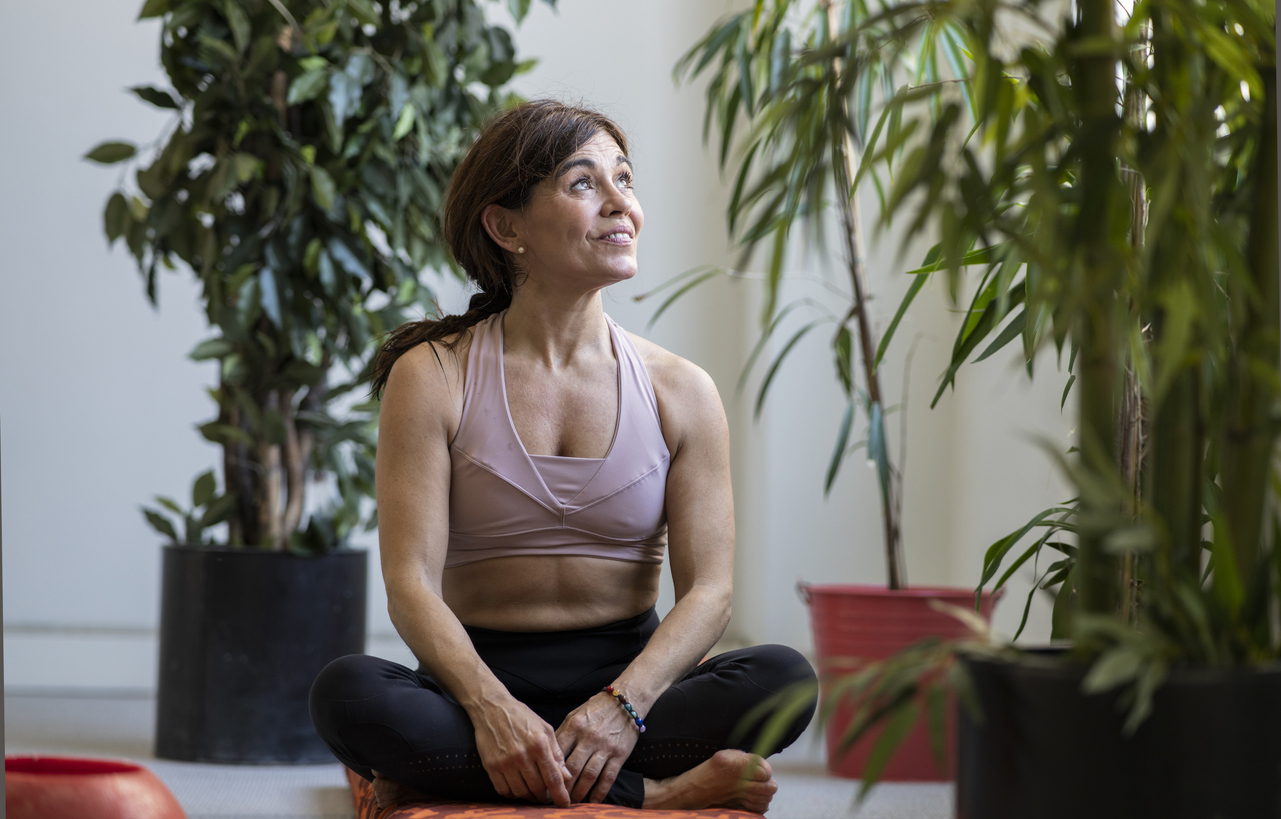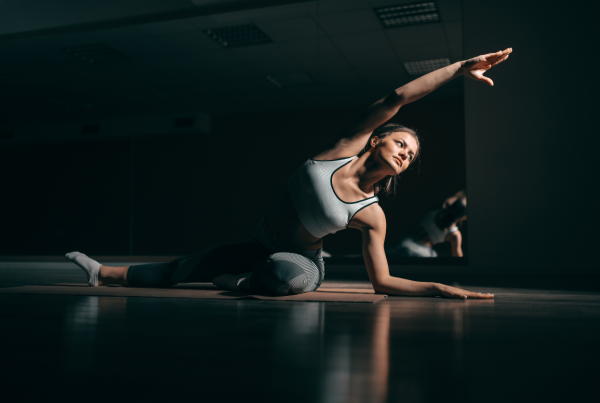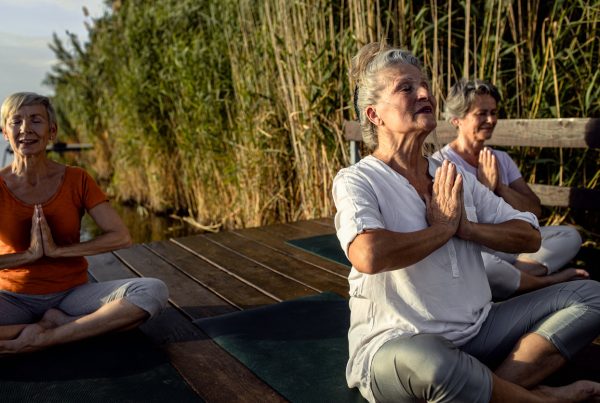Amanda Wright discusses how yoga and meditation can support mental health.
There are many books, blogs and articles on yoga, meditation and mental health. Some of them seem to contradict each other and, in life and in mindfulness practices, there are many paradoxes. I love the ‘enquiry’ meditation teaching: What brings you joy in your practice? But, of course, we need to know where to start and an important part of that is letting go of rights and wrongs, and ‘shoulds’ and ‘should nots’ – there are too many of those in the rest of life. This doesn’t mean, of course, that we don’t take responsibility. Mindfulness is great doorway into seeing more clearly.
How yoga and meditation helped with my mental health
My personal journey with regards to yoga to support my mental health started back in 2001, two years after having been involved in a serious motorbike accident. My friends noticed a change in the way I related to them. I had sustained slight frontal lobe syndrome, so they suggested I join them for a yoga session. I was lucky to really connect and appreciate both the teacher and that first session, and here I am today still practising. I added to that my daily meditation practice, which helps me to understand that I need to appreciate each day as it comes and be loving and understanding to myself and others.
Bringing gratitude into our yoga and meditation practice to help with mental health
Some of us are drawn to the more dogmatic forms of yoga and meditation; we need more structure, instructions and guidance. Some of us enjoy more freedom but, whatever style you might choose, eventually you will find your own way, and indeed find what brings you joy in your practice. Have trust in that. We can be very harsh critics of ourselves – just be patient. When we are feeling unsettled in life, of course we want a quick fix to make us feel better about ourselves and our lives, but these things can take a lot of time, care and patience.
As humans, we have a tendency to feel there is something wrong with us, particularly sometimes if we feel ‘alright’ in the midst of it. How can we be feeling fine when there is so much stress, challenges of various kinds, unhappiness, unrest and unfairness going on all over the world? All of which we are constantly being fed through the various media channels.
Where is the good news? This is also bad news because of the negative bias of our brains – it is just the way they have been formed – but the good news is we can change our neural pathways through gratitude and appreciation practices. (Note: Ruby Wax has written a great book called Sane New World, which is worth reading if you would like to know about how the human mind works and what we can do to support and understand this more.)
The other piece of good news is that we only need to reflect on the little things that give us joy – those things that please us – and there are many of those that we overlook throughout our day. This is a practice I do before I go to sleep at night; the suggestion is this practice also helps us to wake up in a better place – even a good place – in the morning, no matter how grumpy we may have felt before we went to bed. I fall asleep mid-practice sometimes, as I go through the day remembering gratitude for my morning tea, water to wash with, food to eat, etc. Another pre-sleep practice can be to bring to mind two things we appreciate about ourselves, not in an egotistical way but a heartfelt way; again, it can be something small, such as smiling at someone or not reacting in a way we might usually towards someone who has upset us. It’s also about just being aware that our inner critic seems to want to take us somewhere other than appreciation: “Ah yes, but do you remember how you did so and so?” If possible, we give that space and return to appreciating ourselves.
Bring all of ‘it’ to your yoga and meditation practice
A point to mention, which I talk about generally at the beginning of a session of either yin yoga or meditation, is that we do not have to feel or look a certain way to come to practice or to be on our yoga mat. We bring all of ‘it’, whatever ‘it’ might be, to our practice – and, most of the time, we feel even a slight relief from our inner and outer challenges just by moving the body and potentially freeing and giving our minds a break from going into the fears, for example, of the future, or wishing that something was different from our past. We stand in the midst of it and let it go, even if only for the time we practise. Allowing that sense of freedom can give us a doorway into seeing that this might be possible in other areas of our lives (i.e., off our mats). So, our practice, whatever that may mean to us, can become so familiar that it becomes useful any place, anywhere, at any time.
What affects the body, affects the mind – and vice versa
The body and mind are intrinsically linked. What affects the body, affects the mind and what affects the mind, affects the body. With that in mind, there is no doubt there are so many different ways to support our minds through the body. Many of my friends, for example, talk about how swimming and running to them feels mind settling, meditative and calming, slowing the mental fluctuations down, the eternal chatter of not being good enough, not looking good enough, wanting something else, something more than life has to offer in that moment. All of ‘it’ can drop away, at least for a moment, and the more we practise – again, whatever practice may be – the more we seem to access the simplicity of being more present, which leads to a clearer comprehension of what is needed.
What I find personally with my practice of yoga and meditation, particularly yin yoga (a slower, fairly stationary practice, holding floor-based poses for a time) is that it allows me to listen, see and feel both my body and mind and enquire, if needed, as to what might need support in a moment of losing interest in my experience, or if I start interpreting what is happening, or getting anxious or fearful about some future event. It allows me to bring about a lighter sense of being around/with all of ‘it’, allowing me to see, as Buddha taught, the 1,000 sorrows but also the 1,000 joys.
So, again, paradoxically to the way we are taught, it’s a slowing down and exploration of being with ourselves, as ourselves, and opening out to that experience and seeing what is needed. One example of this in yin, is when we are asked to rest in awareness with discomfort (not pain) in the shapes we hold without tormenting ourselves; this is challenging, but a great way to strengthen our minds and with that strengthening comes a softening.
Also, importantly, it allows us to see if we might need some support other than meditation and yoga. As we take time to reflect and, in a sense, dive inwards, things we have pushed away or held down from our past might arise. We might be fine with them, or maybe we need more support in the way of mentoring or counselling. As a yoga and mindfulness teacher, I get support from my main teacher, who is also a highly qualified psychotherapist; she mentors me.
The most important thing is to listen to yourself, whether that might mean exploring changing techniques, teachers, practices or getting some help from a qualified mental health practioner.
There is a book called Yoga, PTSD and Me by Sara Waymont. It’s a great book, written from the perspective of someone who has been through trauma, rather than written from an academic perspective. As Sara shares in the introduction: “Yoga doesn’t take away life’s struggles. It just teaches us to face them with equanimity; a real sense of calmness and composure.”
I have been teaching since 2006. My yoga practice is still important, but it is my daily meditation practice that really helps to settle the unsettled and enable me to understand that I need to embrace and appreciate each day as it comes. I need to be kind, loving and understanding to myself and others. It really is a journey of self-discovery, and what a wonderful journey that can be.
Fancy reading another blog on yoga? Check our Jayne Nicholl’s blog on creating the perfect yoga flow.
If you’re looking for yoga insurance, we’ve got you covered!
Author Bio

Amanda Wright is an enthusiastic and devoted yoga practitioner and an experienced and qualified teacher. She loves to teach bringing a lightness to her classes, making them an enjoyable but learned experience. Her study is ongoing, she partakes in at least one residential Yoga or Meditation retreat a year, and continues to further her own knowledge and study of yoga with teachers of various traditions as well as having a self-practice.







